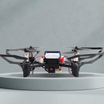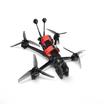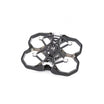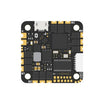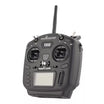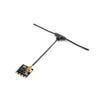India is on the brink of a drone revolution, with massive potential to reshape industries like agriculture, infrastructure, and security. However, while innovation is rising, regulatory roadblocks continue to keep the industry grounded. The biggest challenge? A sluggish approval process that slows down not just drone startups but the entire ecosystem.
The Promise of Drones and the Reality of Red Tape
Drones could redefine the way we monitor infrastructure, enhance farm productivity, and respond to disasters. But there’s a major roadblock—permissions. Even in a tech-forward city like Bengaluru, some areas remain off-limits to drone operations due to a maze of approvals required from multiple agencies.
Mughilan Thiru Ramasamy, co-founder and CEO of Skylark Drones, shared his first-hand experience of navigating this bureaucratic web. Despite policy reforms, he revealed that getting clearance to fly drones in urban spaces remains a major challenge.
"To fly a drone in a city, you need approvals from HAL airport, CISF, the Commissioner’s office, and several others. It’s a long, frustrating process that stifles innovation," Ramasamy explained.
Also read: Hyderabad holds a drone show for cancer awareness.
Growing Interest, Yet Regulatory Hurdles Persist
As of September last year, India had registered 10,208 type-certified commercial drones under the Digital Sky Platform. The Directorate General of Civil Aviation (DGCA) has issued 96 type certificates for different models—65 focused on agriculture and 31 for logistics and surveillance. These numbers highlight the rapid adoption of drone technology, particularly in agriculture for crop monitoring, spraying, and yield assessment.
But the enthusiasm of the industry is dampened by one key issue—getting permissions. India’s airspace is divided into three zones under The Drone Rules 2021:
-
Green zones (86% of airspace): No special permission required.
-
Yellow zones: Require air traffic control (ATC) approval.
-
Red zones (approx. 9,969 locations): Need clearance from the Civil Aviation Ministry and local authorities.
For drone startups and enterprises, this means navigating layers of approvals before they can even get off the ground. The result? Delayed projects, stalled innovation, and missed business opportunities.
Also read: Drones vs traditional air power.
The Manual Approval Nightmare
One of the biggest problems, according to Ramasamy, is the absence of a centralized digital approval system.
“Everything still runs on pen and paper, or at best, email—which is just digital paperwork,” he pointed out. Without an efficient digital clearance system, operators often wait weeks or even months to get the necessary approvals.
Bodhisattwa Sanghapriya, CEO of IG Drones, echoed these concerns but noted that some progress has been made. “Compared to a few years ago, clearances are happening faster, especially for startups building 100% made-in-India drones with no Chinese components.”
This aligns with the government’s push for Atmanirbhar Bharat and the vision to make India a global drone hub by 2030. But there’s still a long way to go.
Policy Improvements and Persistent Challenges
The government has taken steps to streamline drone regulations. In August 2024, The Drone Rules were amended to remove the passport requirement for registration. Now, IDs like Voter ID, Ration Card, and Driving License are accepted.
Despite these changes, several bottlenecks remain:
-
Drone delivery services: Ecommerce and healthcare applications are facing delays due to prolonged bureaucratic approvals.
-
Infrastructure projects: Drone-based mapping and surveying require multiple clearances, causing slowdowns.
-
Security concerns: The government mandates tamper-proof mechanisms to protect drone firmware and hardware, ensuring safety but adding another compliance step.
More Than Manufacturing: The Need to Drive Demand
Regulatory delays aren’t just an issue for drone startups—they impact enterprises, government projects, and the broader ecosystem. While the government has focused on boosting drone manufacturing, real industry growth will only happen when demand increases.
"More than subsidies, we need real-world use cases that push adoption," Ramasamy emphasized. Without large-scale projects and government-backed initiatives, startups will struggle to find commercial success.
Interestingly, despite the push for drones, the recent Union Budget 2025 allocated zero funds for the Production Linked Incentive (PLI) Scheme for drones. Instead, ₹676.85 crore was set aside for the Namo Drone Didi program, indicating a focus on smaller-scale drone applications.
Meanwhile, China’s DJI dominates the global drone market, despite India and China having started with similar innovation timelines. India’s regulatory complexities continue to hold it back.
The Road Ahead: What Needs to Change?
To truly discover India’s drone potential, further reforms are necessary:
-
A centralized digital approval system: The Digital Sky Platform needs an upgrade to allow real-time digital approvals, reducing bureaucratic delays.
-
Faster clearances for trusted players: Domestic manufacturers with secure, compliant drones should get priority approvals.
-
Expanded financial incentives: Government-backed projects should create more demand across industries beyond agriculture.
-
Public-private collaboration: Startups, enterprises, and regulators must work together to create policies that encourage innovation without compromising safety.
India’s drone industry is standing at a crossroads. With the right policy shifts, it can rise to new heights and become a global leader in drone technology. But unless these regulatory roadblocks are addressed, the revolution will remain grounded, waiting for its moment to take off.




